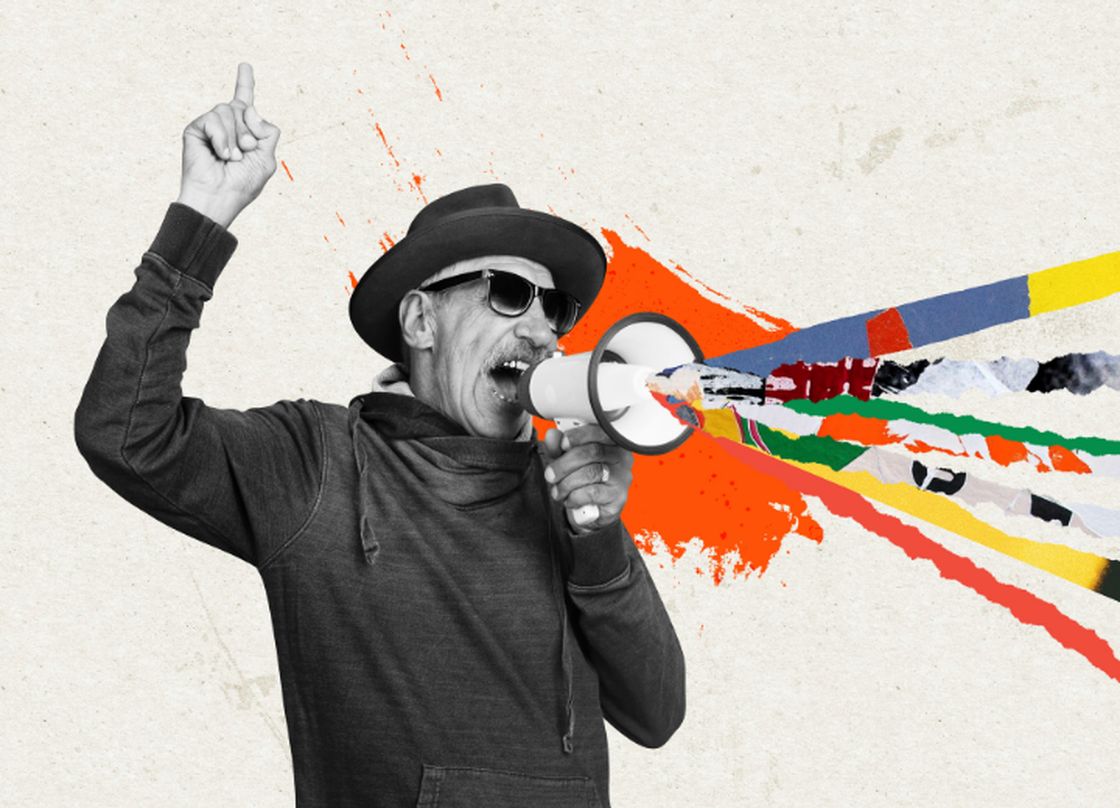

It’s 2025. Thought leaders on LinkedIn are on fire with hot takes about AI in marketing. Major media outlets are lamenting the “death of creativity” and waving warning flags about the current cultural dark age. Despite the undeniable new tools and efficiencies we’ve unlocked in the digital-first age, our ideas seem to be stuck in a rut. Among recycled trends, algorithm-chasing content and everyone following the same advice, everything is starting to look, feel and sound the same. And as of many of us in marketing are becoming more aware: advertising may be the worst offender.
To put it plainly: the advantages of our digital- and social-centered approach are contributing to lazy creative. As marketing pros, we’ve all become addicted to speed, efficiency and scale. When a campaign’s metrics can be neatly summarized in a dashboard of CTRs and impressions, it’s easy to chase KPIs themselves over thoughtful comprehension and emotional connection.
Yes, it can seem incredibly cost-effective to default to a screaming logo, a stock photo and a two-word call-to-action that can most likely be written by my (im)personal robot assistant, Chad G. Peters. A simple recipe for ROI, perhaps. If you pay for the right impressions and wrap it all in a clean, safe design, your campaign will almost inevitably make some conversions. And of course there’s a time and place for that in some performance marketing — assuming you’ve set the foundation with a standout brand.
But I hate it. And not just because it crushes my creative spirit. Risk-aversion and a “good enough” mindset is the antithesis of effective advertising. Every “safe” decision we settle on contributes to the proverbial sea of sameness. Consumers want no part of it — and our culture is thirsty for better.
For brands who really want their marketing to make waves — let me make a case for bold creative. To change perceptions of your business or industry, start a movement or make a groundbreaking cultural contribution, there’s no investment as impactful as high-quality, human-centered creative.
Creative advertising is a cultural contribution
You already know what it looks like:
Just Do It. 1984. Got Milk? Real Beauty. We’re No. 2.
These ideas didn’t just sell products. They became cultural canon. They challenged assumptions, redefined their categories and helped their brands become synonymous with the current zeitgeist. That kind of success doesn’t come from touting features and benefits. It comes from taking risks and tapping into something bigger — something deeply human.
And here’s the important bit: these ideas were uncomfortable before they were iconic. Apple’s 1984 ad? It tanked in focus groups. Apple board members wanted to pull the whole Super Bowl ad buy and fire the agency.
Got Milk? was nearly scrapped for sounding lazy and grammatically incorrect.
Nike’s now-immortal slogan? It was inspired by the last words of a convicted murderer. Years later, the Colin Kaepernick campaign sparked outrage — and admiration. Even Nike co-founder Phil Knight was unsure, but chose to run it anyway.
Luckily for all of us, these brands chose not to play it safe. They ignored the caution tape, eschewing their comfort zones to push forward with something that felt undeniably original and highly purposeful. In doing so, they redefined the standards of advertising and wildly exceeded expectations for what marketing is capable of.
Tools like generative AI can be a helpful part of the creative process, but they simply can’t compete with creative that leans into cultural moments or the messiness of our human experience.
You want data? I’ll give you data
This isn’t just anecdotal hero worship. Creativity has a measurable impact. According to recent data from WARC:
- 20% of creatively awarded ideas also received effectiveness awards.
- When ideas are highly awarded for creativity, the conversion rate to effectiveness awards doubles — rising to 42%.
- Highly creative ads drive 4x the profit compared to low-creative-quality work.
- And get this: Creativity accounts for 49% of a campaign’s contribution to sales — outpacing even customer loyalty, brand penetration, and market share.
Pushing for creative quality isn’t an exercise in ego. It’s the most powerful lever we have to drive results.
Be brave enough to not fit in
In a culture of rapid content churn and incremental “optimization,” the real rebellion is making something unforgettable. When the default is safe, sameness and AI-assisted mediocrity, your unfair advantage becomes boldness, relevance, originality.
On LinkedIn, Andy Pearson frequently lays it bare about marketing, saying, ”The riskiest thing you can do is be ignored.” If anyone should know, it’s Pearson. As the VP of Creative at Liquid Death, he has skyrocketed the once-miniscule beverage brand to success throughout the early 2020s by transforming the mundane — canned water — into a rebellious, culturally savvy brand through unconventional and irreverent marketing. Its early viral campaigns, like a $1,500 ad that racked up over 3 million views, set the tone for a brand that thrives on bold appeal. What risk-averse marketers may see as “too shocking” or “off-kilter” has paid off handsomely: the company reached $333 million in revenue in 2024 (a 26% jump from the previous year) and achieved a $1.4 billion valuation. Not bad for a product that has virtually no real unique value proposition.
It’s easy to dismiss this level of cultural cache as a phenomenon that’s simply not possible in sectors like healthcare (which may not be the right room for a tagline like “Murder Your Thirst” or a casket cooler giveaway) or B2B (where employees are responsible for spending their company’s money … well, responsibly).
To that I say: hooey (in place of a more precise expletive). Anyone who participates in American healthcare (i.e., virtually anyone who lives in America) knows there may not be a single sector as ripe with opportunity for disruptive ideas that challenge the status quo. As for B2B: what’s the best B2B ad you even remember? I guarantee it’s not the buzzword-laden, feature-saturated trade magazine print ad with a smiling guy in a hard hat. This is an industry of first impressions, and with the AI-driven homogenization of culture and creativity, there’s no excuse not to be making bold moves.
Never forget how a memorable little video for Metro Trains Melbourne absolutely dominated the internet — and led to a 20% reduction in near-miss incidents at train stations.
My challenge to marketers
If you’re hiring creatives to give you creative ideas, I challenge you to relinquish some control. If you want to generate something fast, obvious and on the cheap, AI is more than capable of that. But remember that if creative feels totally comfortable, it’s likely not going to turn any heads.
Instead, try to treat the concept development process a little more like play. Prompt your team with inspiration. Encourage them to be more unexpected. As creative partners, we want the same things you do; it’s our job to build on your purposeful ideas in the interest of advancing your mission and vision. Remember that taking an unconventional path is the only way to get unexpectedly outstanding results.


